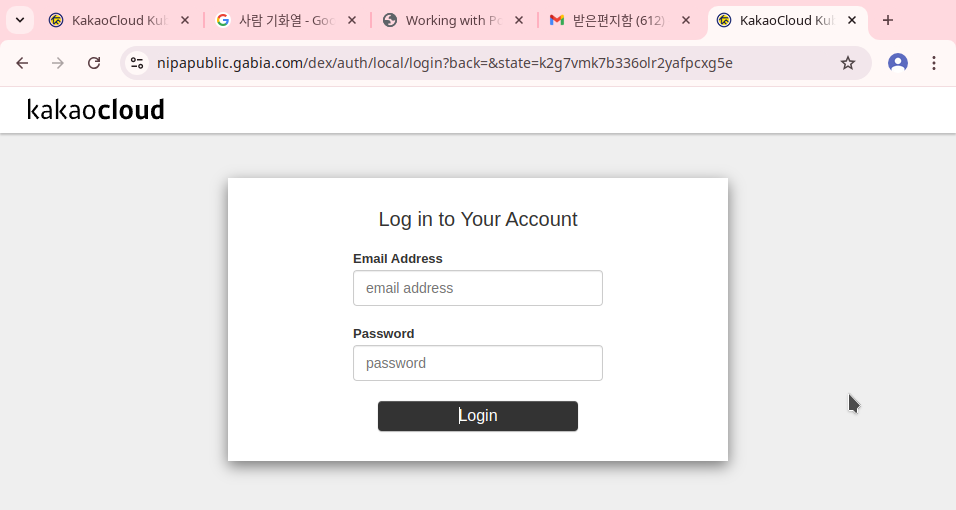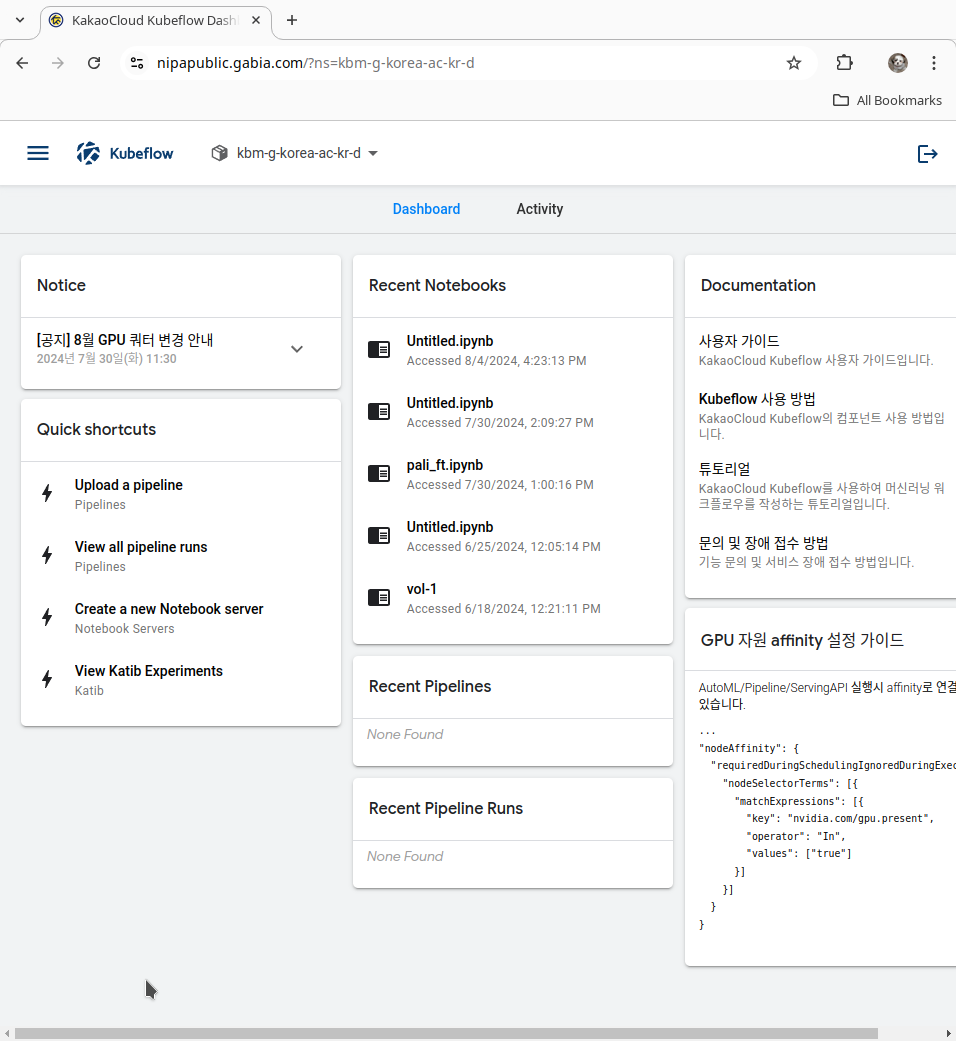How to use NIPA GPU cluster
Before explaining the procedure, the following is the summary.
wesuggestsigning/slp_edu:latest
https://nipapublic.gabia.com
https://docs.kakaocloud.com/ha-gpu
Procedure
- Log on to the website.
https://nipapublic.gabia.com
Then the following screen will appear:

You need to use your ID and password given from NIPA.

- Note that the following documents which may be found in the “Documentation” section may be useful.
- 사용자 가이드 (Can be directly accessed at:
https://docs.kakaocloud.com/ha-gpu) - Kubeflow 사용방법 (Can be directly accessed at:
https://docs.kakaocloud.com/ha-gpu) - 튜토리얼 (Can be directly accessed at:
https://docs.kakaocloud.com/ha-gpu)
- 사용자 가이드 (Can be directly accessed at:
- Creating the note book.
SentencePiece is a toolkit for sub-word tokenization. In this tutorial, we assume that you are using Ubuntu Linux. Link to the SentencePiece github page
conda config --add channels conda-forge
conda config --set channel_priority strict
conda install libsentencepiece sentencepiece sentencepiece-python sentencepiece-spm
or
pip install sentencepiece
STOP data set
In this tutorial, we will use the STOP dataset. Information about this dataset may be found at the following link: https://facebookresearch.github.io/spoken_task_oriented_parsing/ Stop dataset was developed for benchmarking the Spoken Language Understanding (SLU) task.
You may download it from the following link: Link to the download page
Algorithm
Running it
spm_train --input=train-all.trans_without_uttid.txt \
--model_prefix=model_unigram_256 \
--vocab_size=256 \
--character_coverage=1.0 \
--model_type=unigram
Doing tokenization and detokenization
Summary
In this page, we discuss how to define a model using Keras.
